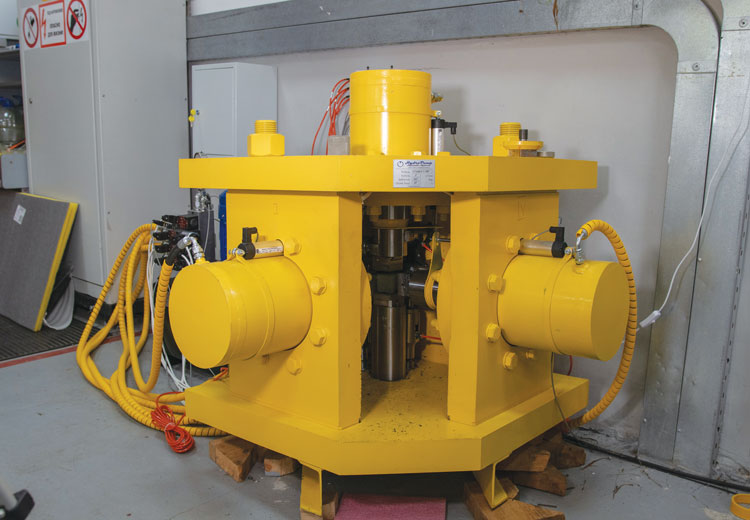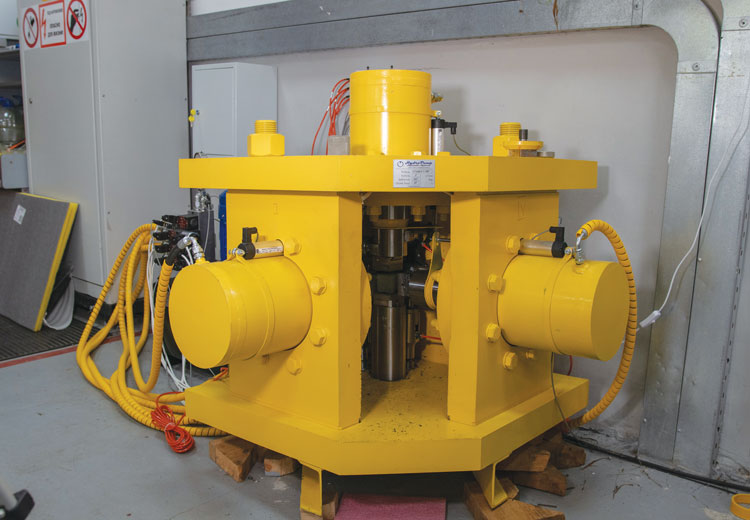Samara Polytech scientists develop unique rock testing facility

A new materials testing facility is helping scientists carry out research on the earth’s internal structure for use in petroleum drilling projects
A test facility simulating rock positions has been developed by Samara State Technical University (Samara Polytech). The reservoir conditions imitating machine allows scientists to carry out experiments by subjecting materials to conditions that mimic rock characteristics at different depths.
The unique facility, developed by Samara Polytech, will help researchers explore the earth’s internal structure. Under laboratory conditions, the mechanism recreates the physical parameters – for example, pressure and temperature – of a deposit located at different depths. This allows the user to accurately determine a rock’s mechanical properties, such as hardness, elasticity and plasticity.
“The development of the facility that we call the monster machine was inspired by Sergey Alekseyevich Khristianovich, an academic at the Russian Academy of Sciences who is the founder of oil and gas geomechanics in the USSR,” says Alexey Podyachev, project manager and associate professor at Samara Polytech’s oil and gas wells drilling department. “Unfortunately, we did not see the live installation of the legendary scientist. We were content only with photographs on the internet. But we knew the main principles of its work that formed the basis of our project.”
Podyachev, together with Pavel Bukin, a senior lecturer in the department, calculated the required rigidity of the machine body, which was modelled and manufactured by engineers at a plant in St. Petersburg. When the body was delivered to Samara Polytech, the university’s researchers began to manufacture the inner part of the mechanism, where the rock sample directly interacts with the hydraulic cylinder rods, which transmit the force from the piston.
“The uniqueness of the machine is that the investigated core fragment is loaded independently from three sides. To do this, in the inner block we designed a rather complex kinematics of a decreasing cube with 100 per cent overlap of the edges,” explains Podyachev. “As a rule, a cylinder with a diameter of 30 millimetres and a height of 30 or 60 millimetres is considered the reference shape of the core being examined. However, it is impossible to provide a fully fledged orthogonal load along three axes on such a sample.
“Therefore, we decided to replace the cylinder with a cube. We cut a cube-shaped sample from a full-size cylindrical core and placed it on a special pedestal inside the machine, where pressure plates press it from three sides. All the faces of the sample are completely covered – that is, there are no free areas. This means that it is loaded evenly over the entire face plane and has no unloading sections. So, you can simulate, for example, the pressure inside the well. For this, the sample is uniformly loaded and then one of the sides is gradually released. Thus, engineers calculate at what pressure and loads plastic deformations of the rock appear and its subsequent destruction occurs.
The “monster machine” makes it possible to carry out unique research that reveals the influence of drilling fluid on the mechanical properties of rock. To achieve this, the sample is saturated with liquid and installed in the machine. An elastic wave is passed through the sample at a predetermined interval. All deformations are monitored using pressure and deformation sensors.
The rigidity of the machine’s casing allows it to carry large loads without reducing the accuracy of the results. Furthermore, tests unrelated to drilling can also be carried out on it, such as determining the strength of cement, metal and other materials.
Find out more about Samara Polytech.
